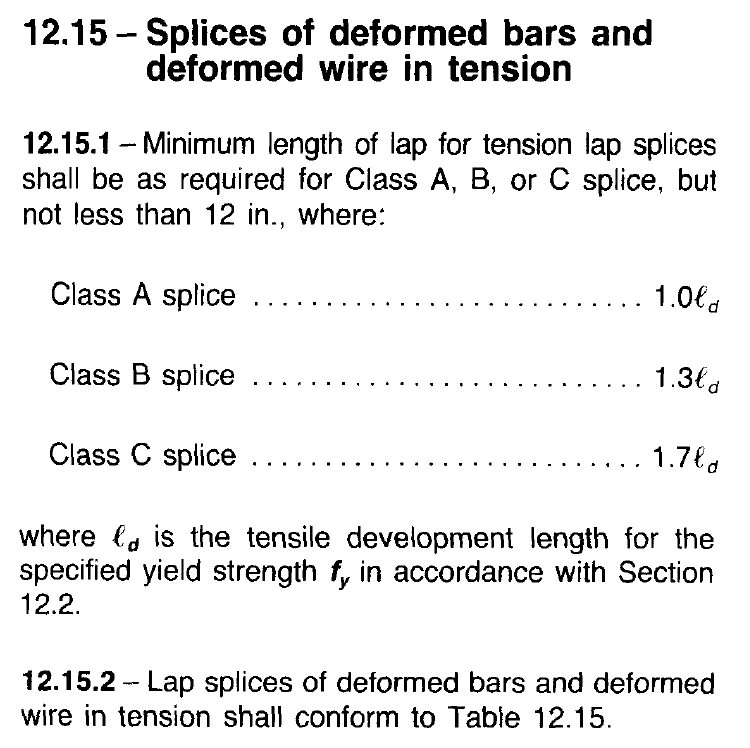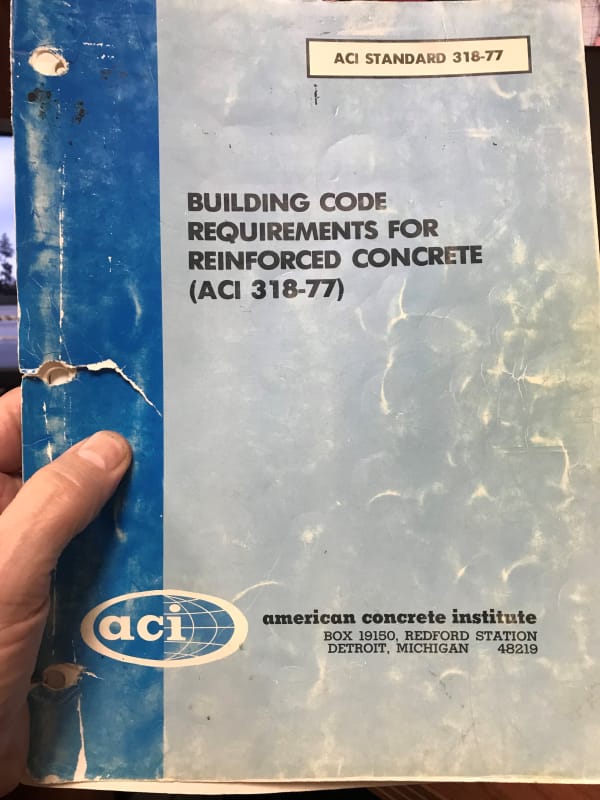EDub24
Structural
- Mar 8, 2016
- 185
I'm reviewing an existing concrete and masonry structure that was designed in 1989. I can't find any information on the design code used but I would guess the ACI 318-83 that was revised in 1986. In the general notes section for the rebar lap splices I see this statement:
"UNLESS CALLED OUT OTHERWISE ON THE PLANS. THE LENGTH OF LAP SPLICES SHALL BE CLASS "B" WHERE NO MORE THAN 1/2 THE BARS ARE LAP SPLICED WITHIN THE LENGTH TABULATED BELOW AND CLASS "C" WHERE MORE THAN 1/2 THE BARS ARE LAP SPLICED WITHIN THE LENGTH TABULATED BELOW."
There is then a table that gives lap splice lengths for Class 'B' and Class 'C' for both 'top' and 'other' bars.
First off I'm not sure what are Class 'C' lap splices. I'm used to seeing Class 'A' and 'B'. Can anyone shed any light on this? Also this statement is confusing to me. How can I tell if a bar was spliced with the 'B' or 'C' lap splice lengths per the table? Can anyone shed any light on this? I trued searching for chapter 12 of ACI 318-83 but can't find it. Thanks!
"UNLESS CALLED OUT OTHERWISE ON THE PLANS. THE LENGTH OF LAP SPLICES SHALL BE CLASS "B" WHERE NO MORE THAN 1/2 THE BARS ARE LAP SPLICED WITHIN THE LENGTH TABULATED BELOW AND CLASS "C" WHERE MORE THAN 1/2 THE BARS ARE LAP SPLICED WITHIN THE LENGTH TABULATED BELOW."
There is then a table that gives lap splice lengths for Class 'B' and Class 'C' for both 'top' and 'other' bars.
First off I'm not sure what are Class 'C' lap splices. I'm used to seeing Class 'A' and 'B'. Can anyone shed any light on this? Also this statement is confusing to me. How can I tell if a bar was spliced with the 'B' or 'C' lap splice lengths per the table? Can anyone shed any light on this? I trued searching for chapter 12 of ACI 318-83 but can't find it. Thanks!



![[idea] [idea] [idea]](/data/assets/smilies/idea.gif)
